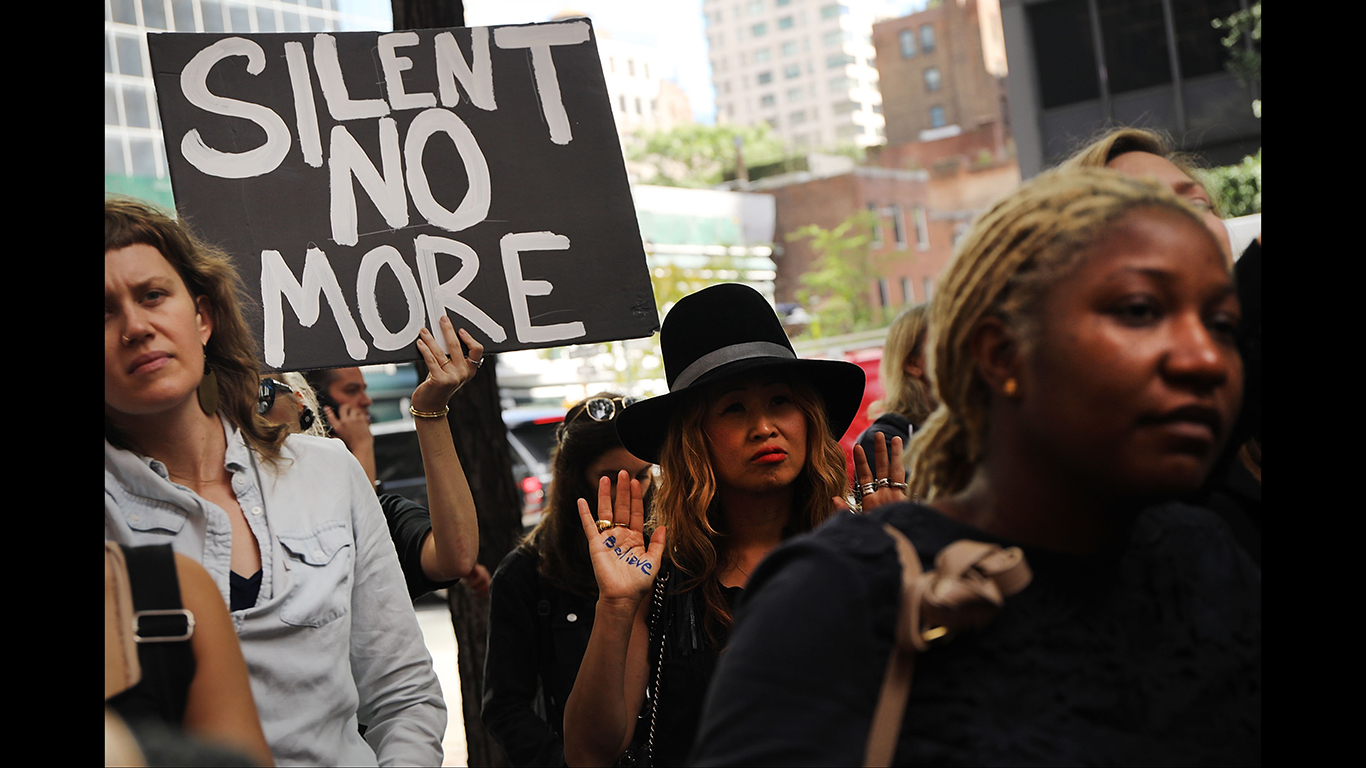
People have been fighting injustice since they could speak. Without such actions, the United States might still be a British colony, unions and work safety regulations might never have emerged, France might still be a monarchy, and women anywhere in the world may have never obtained the right to vote.
The power an defiance of women has emerged in the form of protests, many of which have spread from one country to another changing the course of history.
During the final years of the war between Athens and Sparta, Greek playwright Aristophanes wrote his final peace play, Lysistrata. In the play, women in a city at war withhold sex from their husbands in an attempt to put an end to the war. While Lysistrata is pure fiction, women have held sex strikes for centuries as a way to gain political power. Other forms of protest, from marching and general labor strikes to boycotting public transportation, have all proven effective as ways to garner power and political influence.
The protests on our list were led by women who spent countless hours and sometimes years meeting, organizing, and fighting for an array of causes. In the end, whether it was the right to drive, have an abortion, or simply exist in peace without the threat of violence, these protests achieve tangible results and continue to inspire women into action.
In honor of National Women’s History Month celebrated in the United States every year, 24/7 Wall St. compiled a list of 17 women’s protests that have shaped the world. Dozens of media reports, historical articles, and women’s organizations were reviewed to assess the protests’ demand, achievement, and its significance.
Click here to read about women’s protests that changed history.
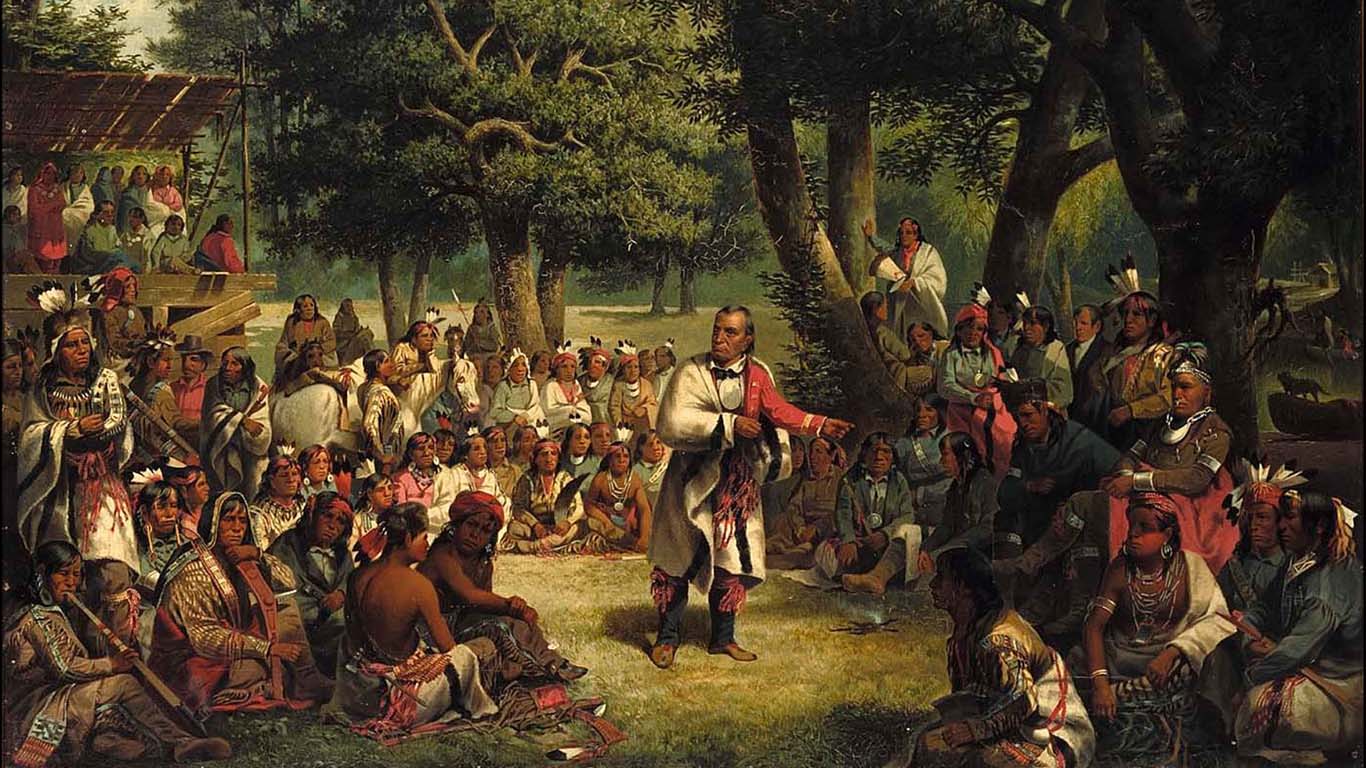
1. Iroquois Sex Strike
> Year: 1600’s
> Location: Iroquois Nation, U.S.
> Demand: To stop unregulated warfare
In a time of perpetual tribal warfare, Iroquois women wanted their voices heard on issues of war and peace. To force the men to consider their opinions, the women withheld sex and certain supplies that they had control over and that were necessary to go to war such as items of food and clothing. They successfully gained veto-power over all future decisions of war.
[in-text-ad]
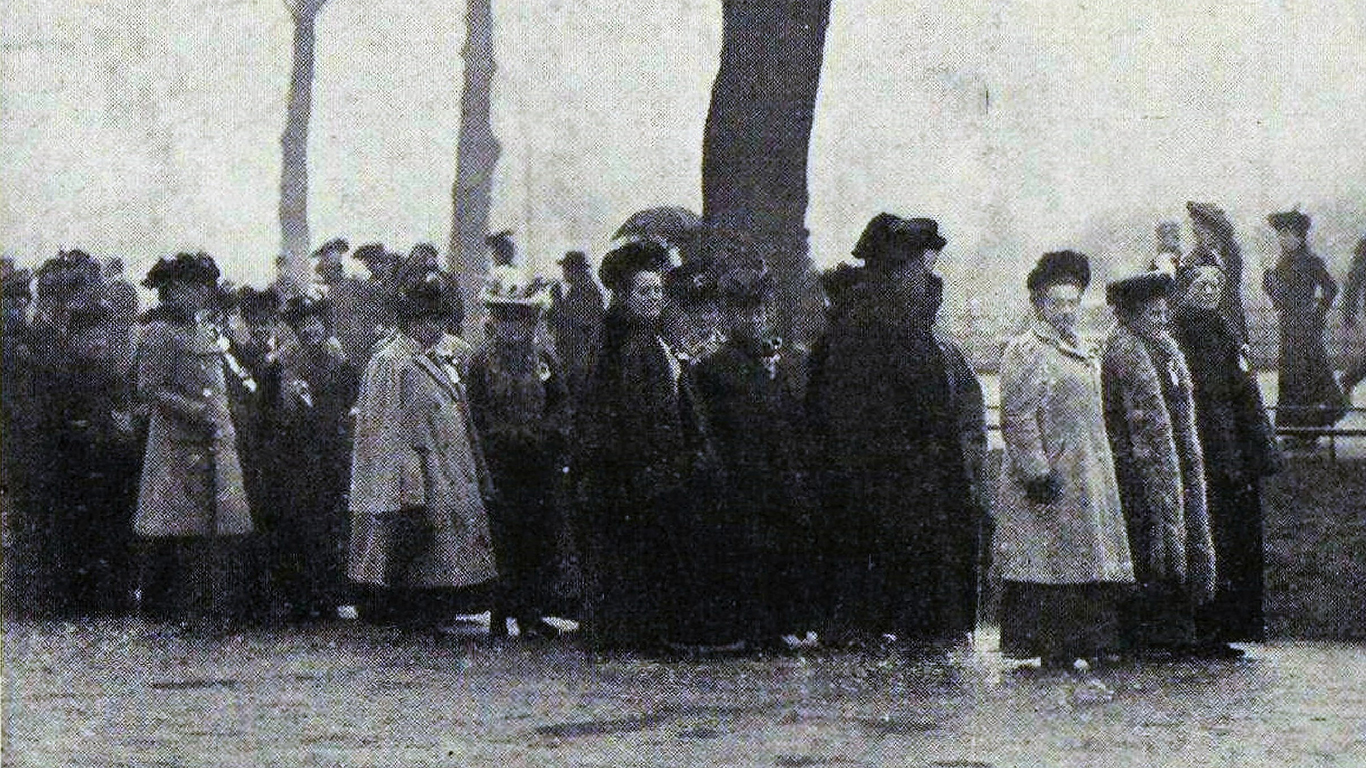
2. The Mud March
> Year: 1907
> Location: London, England
> Demand: Women’s suffrage
In their first march for women’s suffrage, the National Union of Women’s Suffrage Societies (NUWSS) organized over 3,000 women representing 40 suffrage societies to come out for a march in London. Despite heavy rains, the women marched in what became known as the Mud March. The women marching in the rain, despite conventions of the time, as well as the diversity of the women marching showed their dedication to the cause. Public processions became a key tactic in England’s suffrage movement thereafter.

3. Uprising of 20,000
> Year: 1909
> Location: New York City, New York
> Demand: Higher wages and safety regulations
The International Ladies’ Garment Workers’ Union (ILGWU), along with the Women’s Trade Union League (WTUL) organized a general strike among garment workers in New York City. The so-called “Uprising of 20,000” lasted over 13 weeks and ended with a contract granting higher wages for 15,000 garment workers. This “uprising” was the inspiration behind the establishment of International Working Women’s Day.
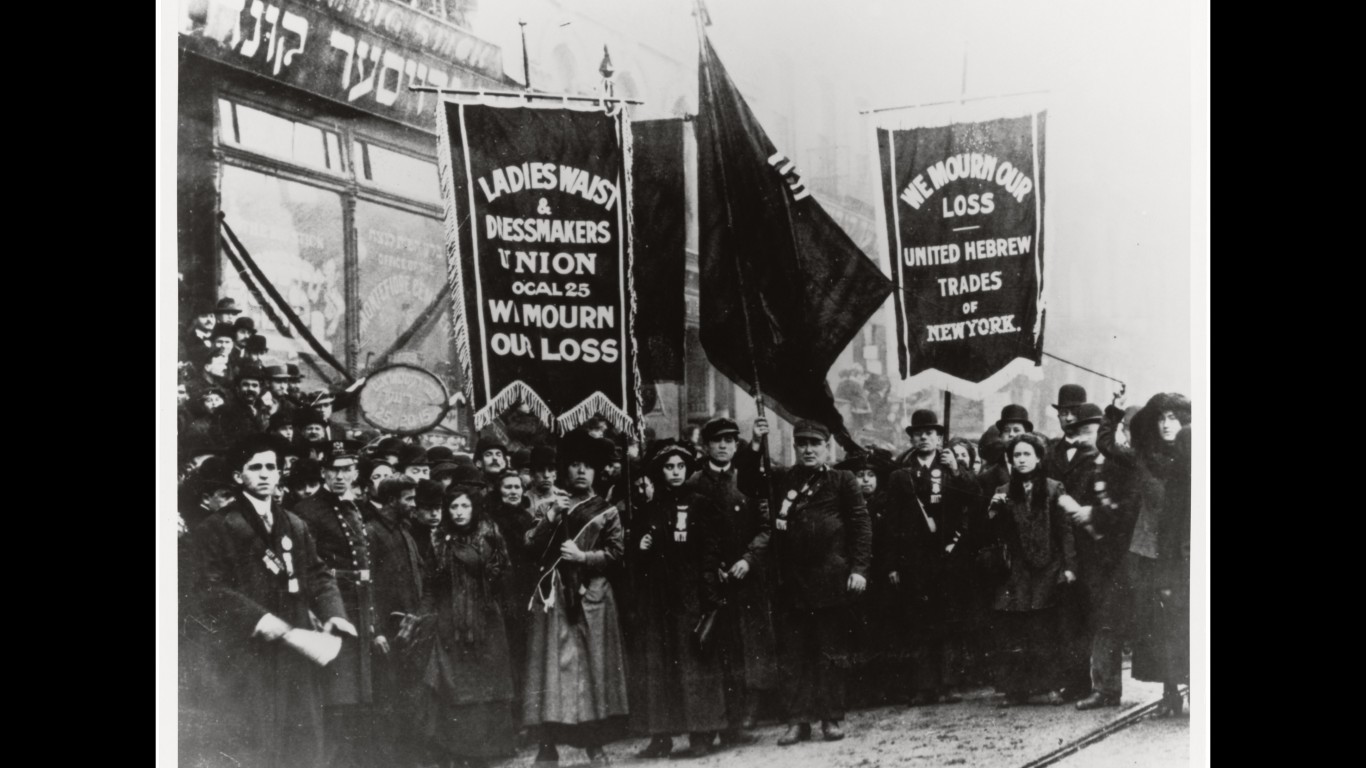
4. Triangle Shirtwaist Fire Protest
> Year: 1911
> Location: New York City, New York
> Demand: To demand work safety regulations
During the Uprising of 20,000, the Triangle Shirtwaist Company in New York City refused to negotiate with workers and fired many union members. On March 25, 1911, a fire in the factory, which employed mostly young Jewish immigrant women, killed 146 people, partly because the factory kept the workers locked in to prevent theft and union walkouts. The tragedy sparked a protest of 80,000 people and lead to the passing of workplace safety regulations and laws that are still in place today.
[in-text-ad-2]
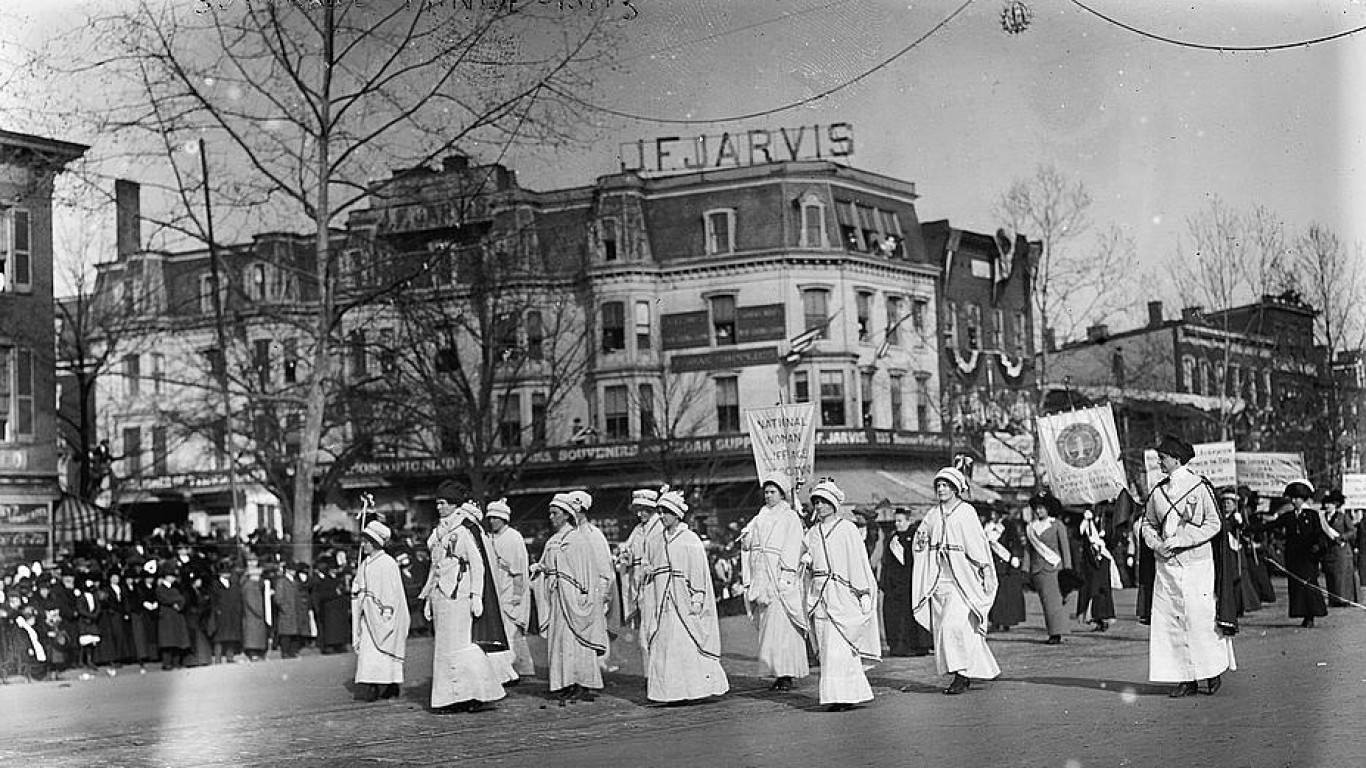
5. Women’s Suffrage Parade
> Year: 1913
> Location: Washington, D.C.
> Demand: Women’s voting rights
The day before Woodrow Wilson’s inauguration in 1913, a parade of up to 8,000 women marched on Washington D.C. in the one of many large suffrage demonstrations. The march received widespread press, and while many protesters were injured or physically assaulted by spectators, the sympathy garnered lead to wider public support. Though the 19th Amendment granting women the right to vote wasn’t ratified until 1920, this protest is considered the first major milestone in the suffrage movement.

6. Montgomery Bus Boycott
> Year: 1955
> Location: Montgomery, Alabama
> Demand: To protest segregated seating
In what is regarded as the first large-scale anti-segregation demonstration in the United States, the Montgomery Bus Boycott lasted over a year and achieved its goal: In 1956, the U.S. Supreme Court ruled bus segregation to be illegal. Though not solely a women’s protest, the boycott was sparked by the defiant act of one woman, Rosa Parks, who refused to give her bus seat up to a white man, and initiated by the Women’s Political Council (WPC), a group of civil rights activists who distributed flyers calling for the boycott.
[in-text-ad]

7. March on Pretoria
> Year: 1956
> Location: Pretoria, South Africa
> Demand: Repeal laws limiting the movement of black people
South Africa’s pass laws required black South African and immigrant men to carry permits that designated where they could work, live, or exist in public. Though they already applied to men, the laws were to be expanded to apply women as well — which lead to the March on Pretoria. In a triumph of organizational unity, 20,000 women marched to deliver petitions to the prime minister, stood in silence for 30 minutes, then sang a song before departing. Though government officials ignored the petitions, the movement was a strong testament to the perseverance of South African women, and the anniversary of the march, August 9, is now celebrated as National Women’s Day.
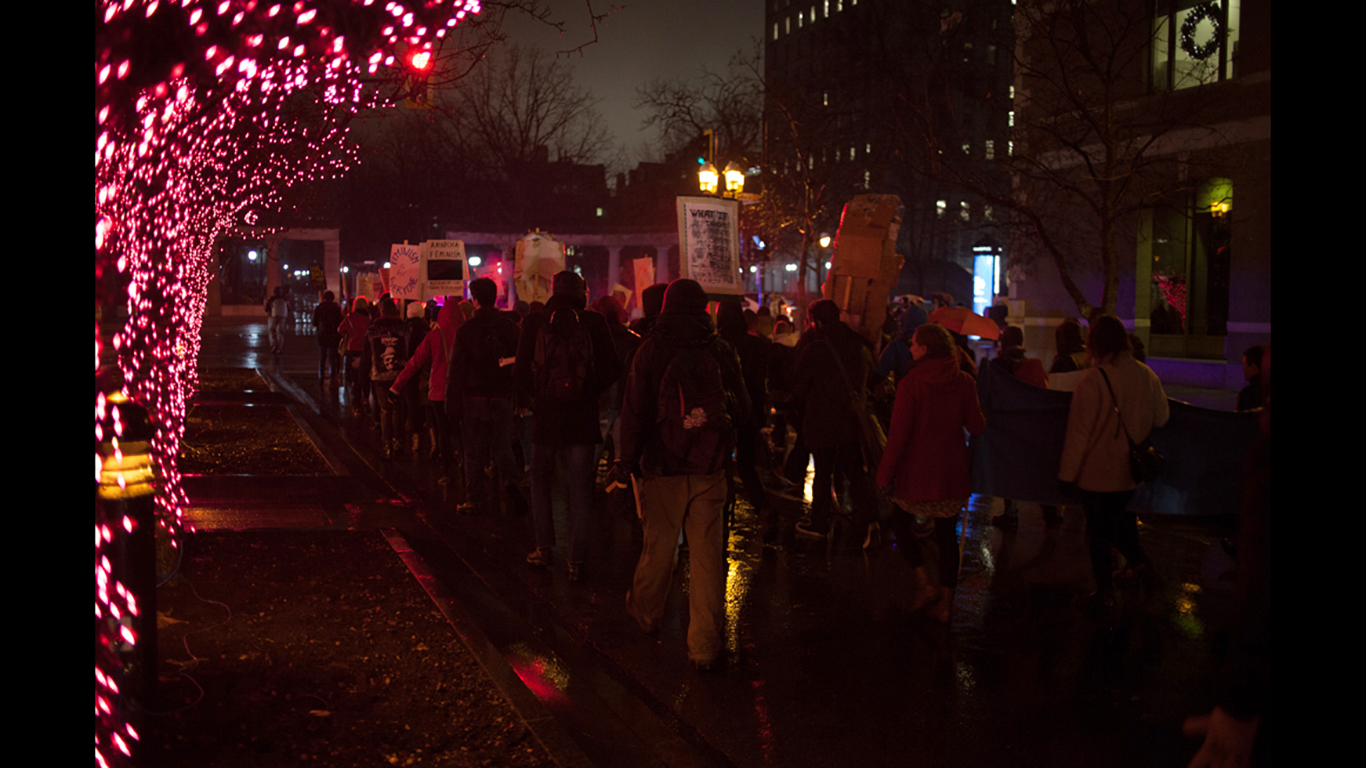
8. Take Back the Night
> Year: 1975
> Location: Philadelphia, PA
> Demand: To end violence against women
Take Back the Night marches started in the 1970s in Philadelphia and Belgium as a way to protest violence against women. The movement has lead to annual marches all over the world. These marches are not only protests, but also vigils for women who have been affected or killed by violence. The marches have provided a platform for survivors to be heard and set a precedent for future actions such as the SlutWalk, which aims to bring awareness to rape culture and end victim blaming. Take Back the Night also has become an official organization whose goal is to end domestic, sexual, and gender-based violence.
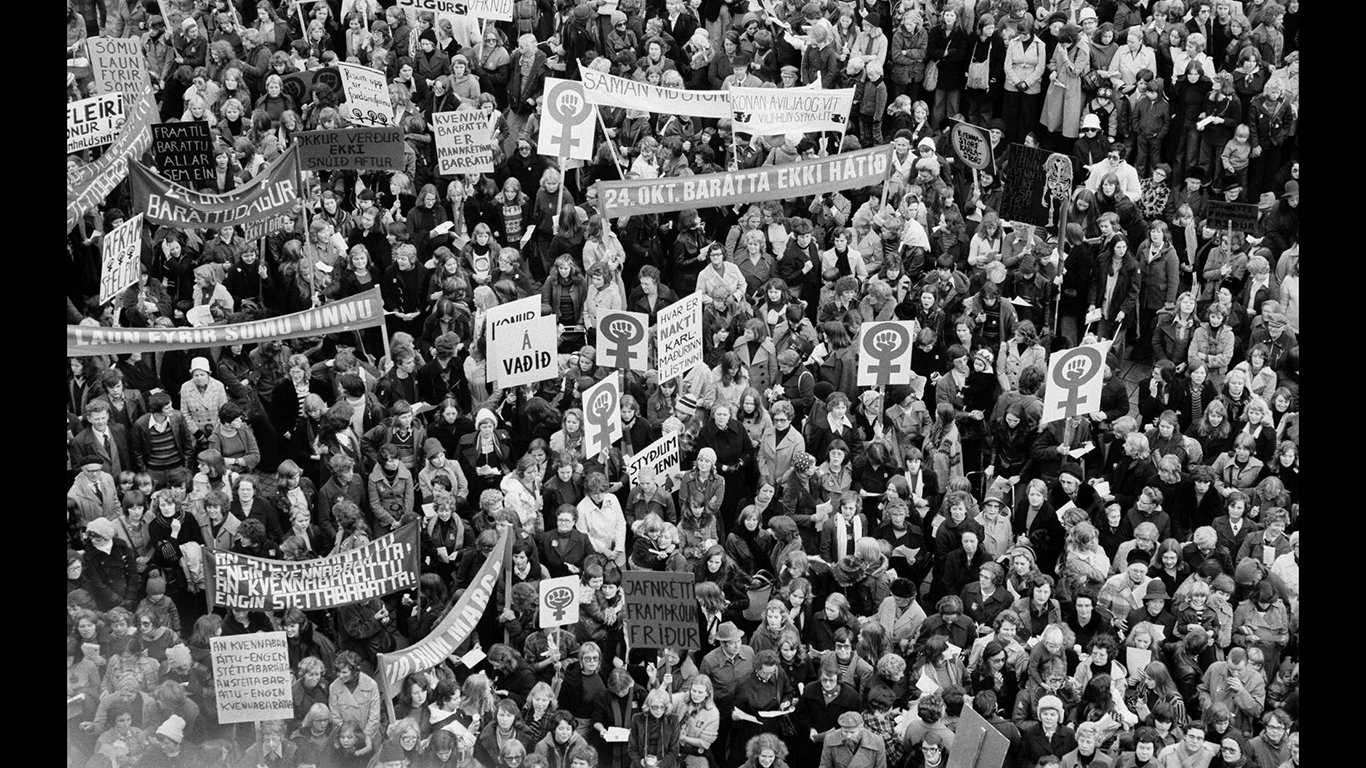
9. Women’s Day Off
> Year: 1975
> Location: Iceland, nationwide
> Demand: To demonstrate women’s value in society
In a massive protest against Iceland’s gender pay gap and the lack of female representation in government, 90% of Iceland’s female population refused to go to work or take care of any domestic duties for one day. The country was effectively shut down. That day, 25,000 women also marched in Reykjavik. A year later, Iceland passed the Gender Equality Act against discrimination in the workplace. Vigdis Finnbogadottir, the nation’s first female president, was elected in 1980 and attributes her election partially to the momentum built by the Women’s Day Off.
[in-text-ad-2]
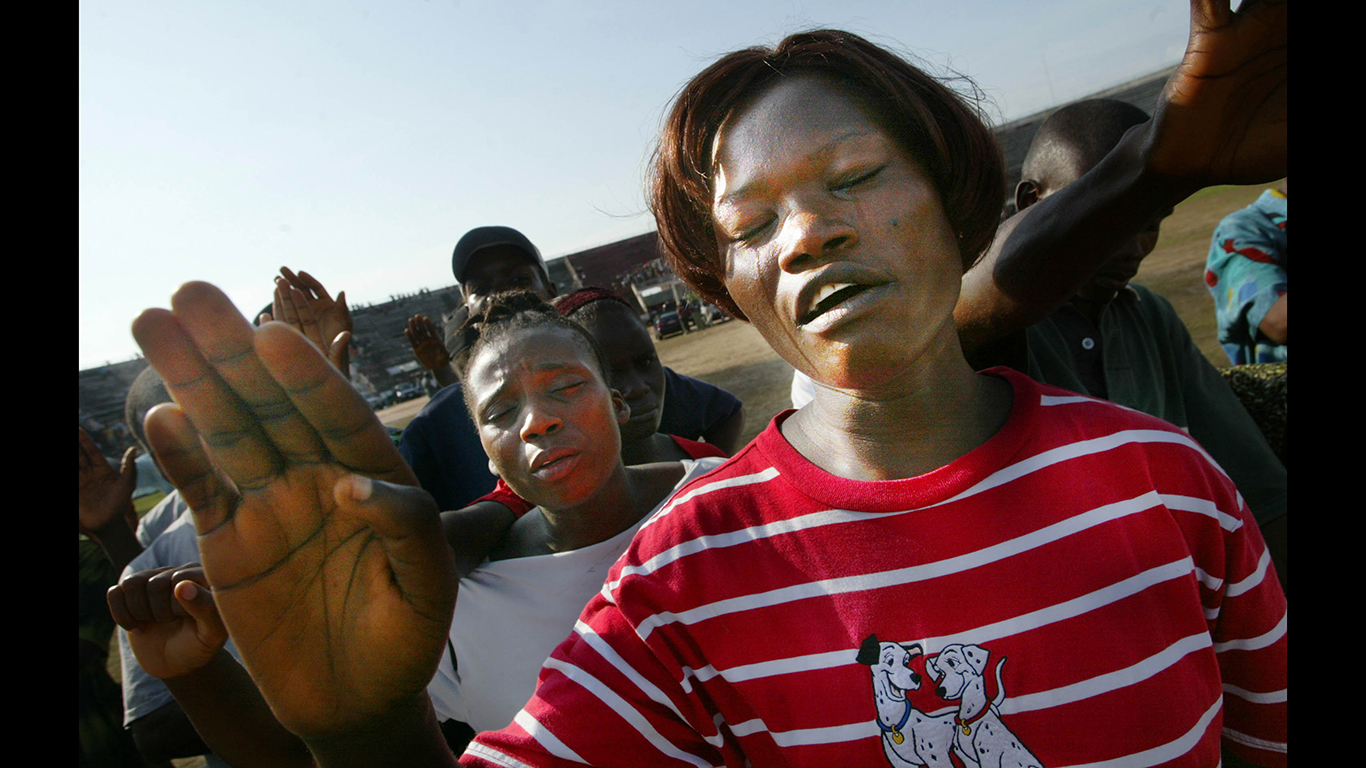
10. Women of Liberia Mass Action for Peace
> Year: 2003
> Location: Monrovia, Liberia
> Demand: An end to the civil war
In one of the most successful sex strikes in history, Liberian women effectively ended a 13-year civil war and got a female president elected — Ellen Johnson Sirleaf, Africa’s first woman president. Under the leadership of Leymah Gbowee, Liberian women withheld sex from their husbands until warlords agreed to end the violence. Sirleaf and Gbowee later received a Nobel Peace Prize for their peace efforts.
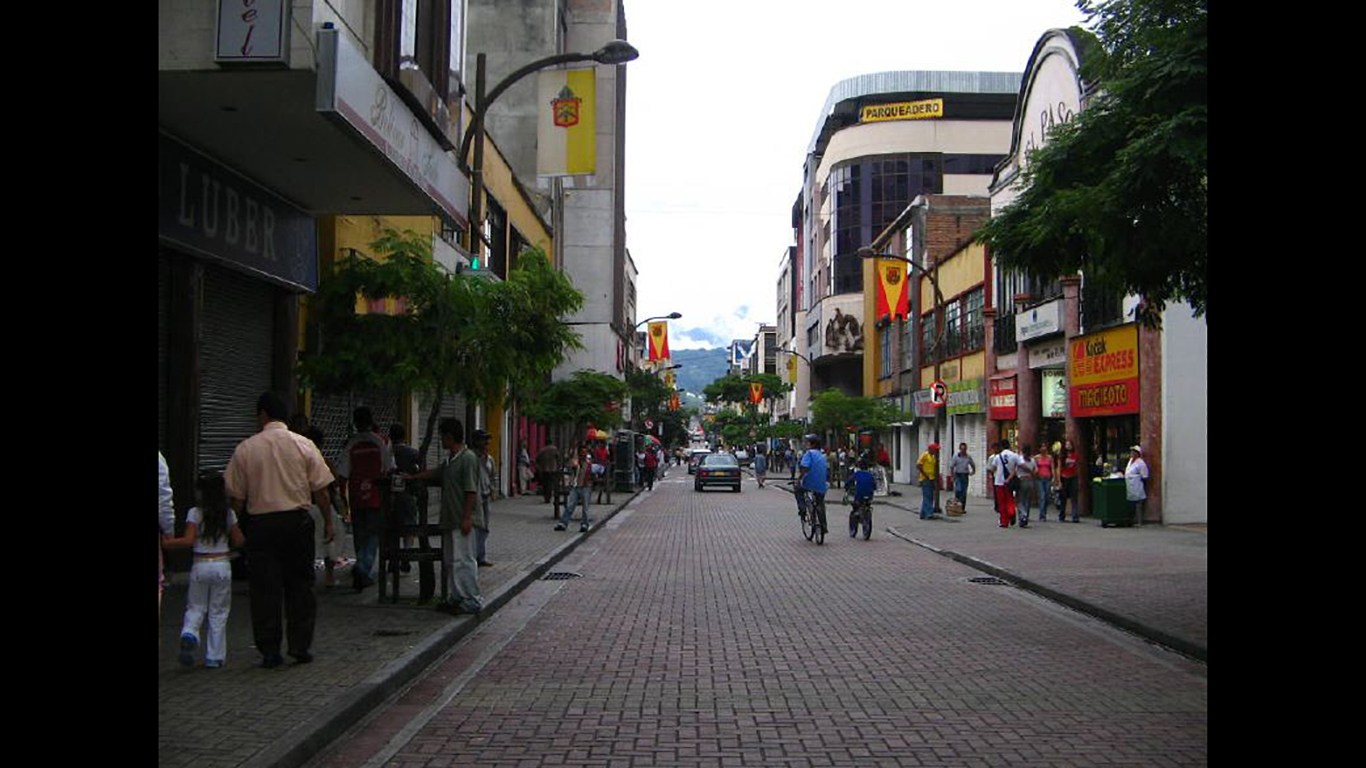
11. Huelga de Piernas Cruzadas
> Year: 2006
> Location: Pereira, Colombia
> Demand: Gangster disarmament
Pereira, considered one of the most dangerous cities in Columbia, had a homicide rate twice the national average in 2006. As gang activity was largely to blame, the wives and girlfriends of gangsters decided to hold a sex strike, demanding that their partners turn in their guns to the government and enroll in vocational training. By 2010, Pereira’s murder rate had fallen by 26.5%, the steepest decline in the country.
[in-text-ad]

12. Sex Strike in Kenya
> Year: 2009
> Location: Kenya, nationwide
> Demand: To end government infighting
After post-election violence in Kenya in 2008 killed 1,500 people and left a shaky coalition government in its wake, various women’s organizations called for action. Their plan was a week-long sex ban. Campaigners offered to pay sex workers to join the strike and even called on the wives of the president and prime minister to participate. The strike ended the worst of the fighting between political leaders and stabilized the Kenyan government.
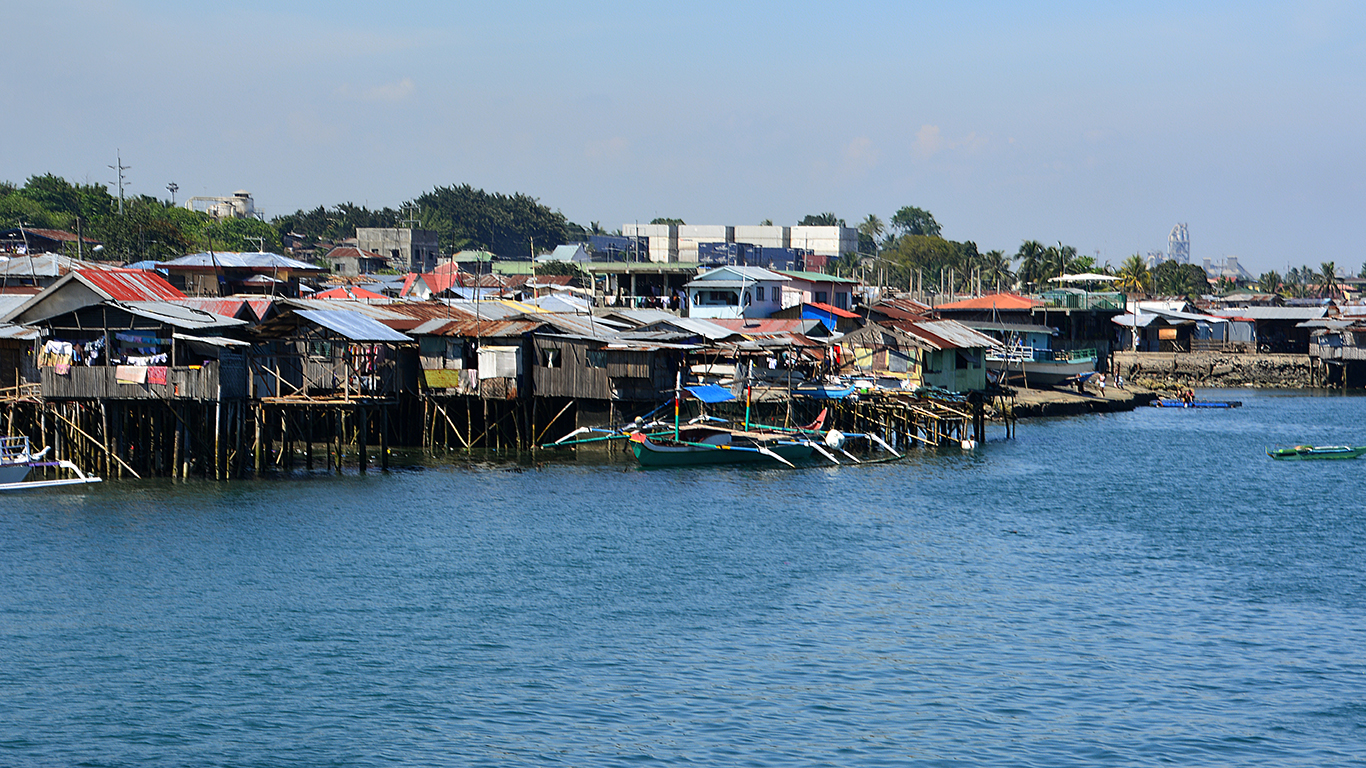
13. Filipino Sex Strike
> Year: 2011
> Location: Mindanao, Philippines
> Demand: To end Mindanao village wars
Plagued by decades of violent rebellion, villages on the island of Mindanao were suffering from lack of trade and market isolation caused by dangerous travel conditions. After the closure of a main road and trade route, affected women in Dado held a sex strike. Within weeks, fighting had stopped, the road was reopened, and trade was able to resume.
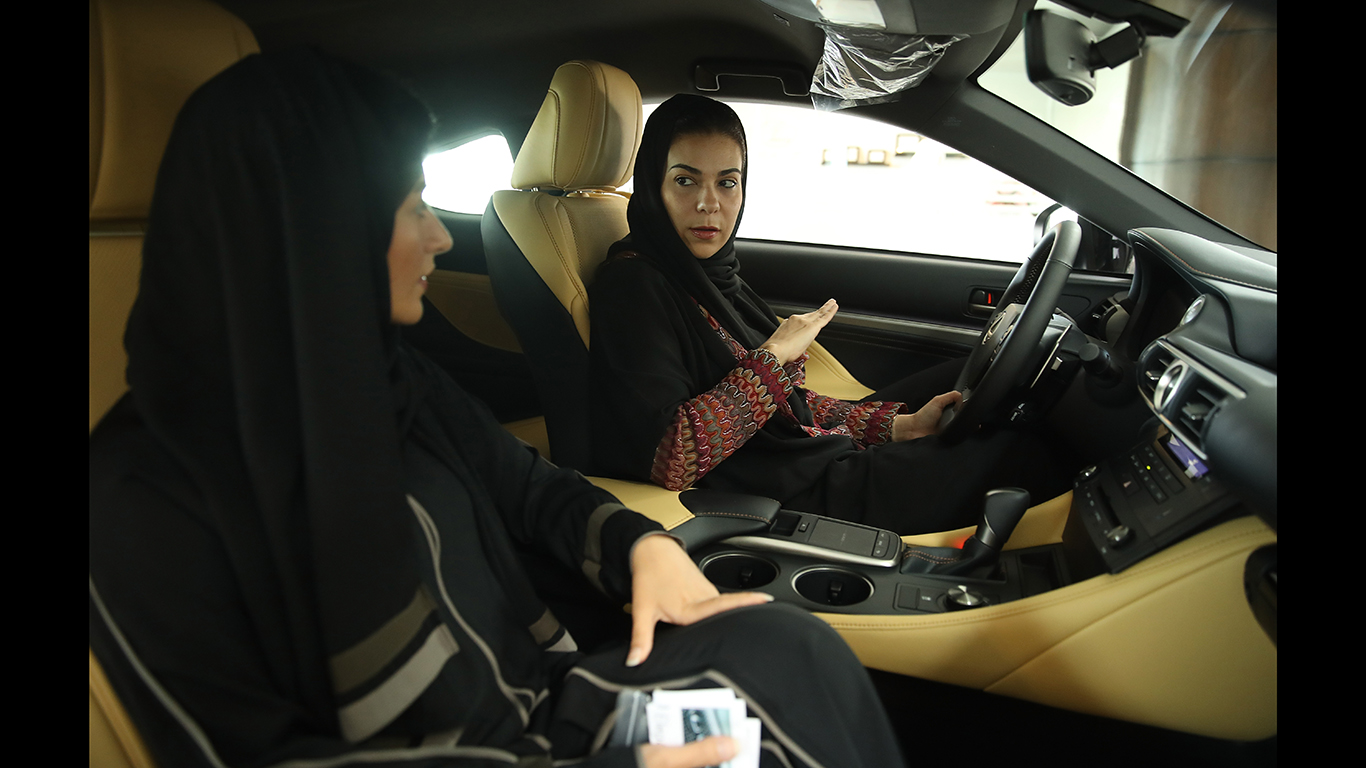
14. Defiantly Driving
> Year: 1990
> Location: Saudi Arabia, nationwide
> Demand: To end ban on women driving
In 1990, a group of women in Saudi Arabia protested the country’s ban on women driving by getting behind the wheel. As a result, some were fired from their jobs. In 2011, another group of women organized a driving protest. At this point, Saudi Arabia was the only country in the world that still prohibited women from driving. The 2011 campaign, which was organized through social media, received worldwide attention after one activist was detained. On Oct. 26, 2017, Saudi Arabia finally issued a royal decree allowing women to obtain drivers’ licenses and drive without chaperones after June 2018.
[in-text-ad-2]
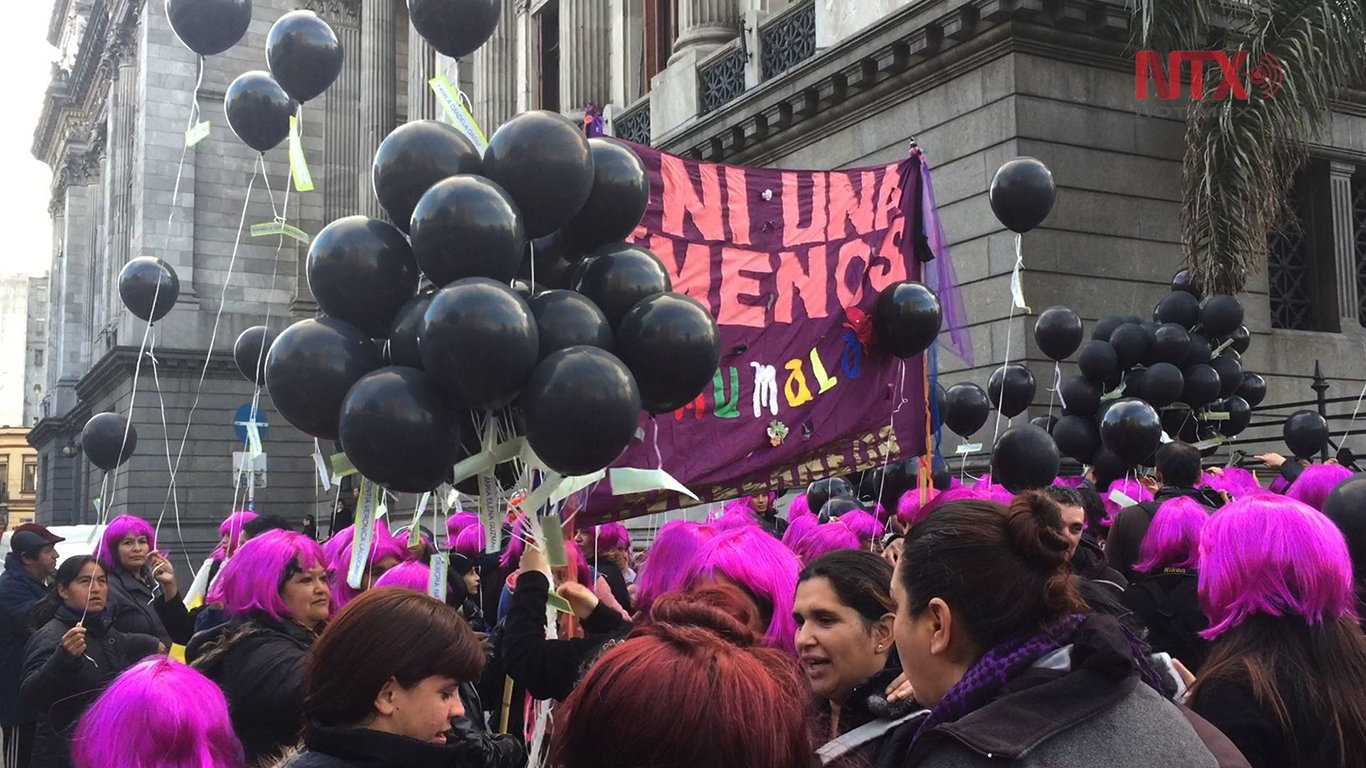
15. Black Wednesday
> Year: 2016
> Location: Buenos Aires, Argentina and other cities in South America
> Demand: To end femicides
After the brutal rape and murder of 16-year-old Lucia Perez in Argentina, tens of thousands of women in Buenos Aires and other South American cities took to the streets on Oct. 19, 2016, also known as “Black Wednesday,” to protest the epidemic of violence against women. A similar protest the year before happened in the wake of the murder of a pregnant 14-year old, Chiara Paez, who was beaten to death by her boyfriend. Both protests brought about government recognition. In 2015, the Supreme Court of Argentina announced the establishment of a registry of femicides, and in 2016, the president announced a plan to fight violence against women.
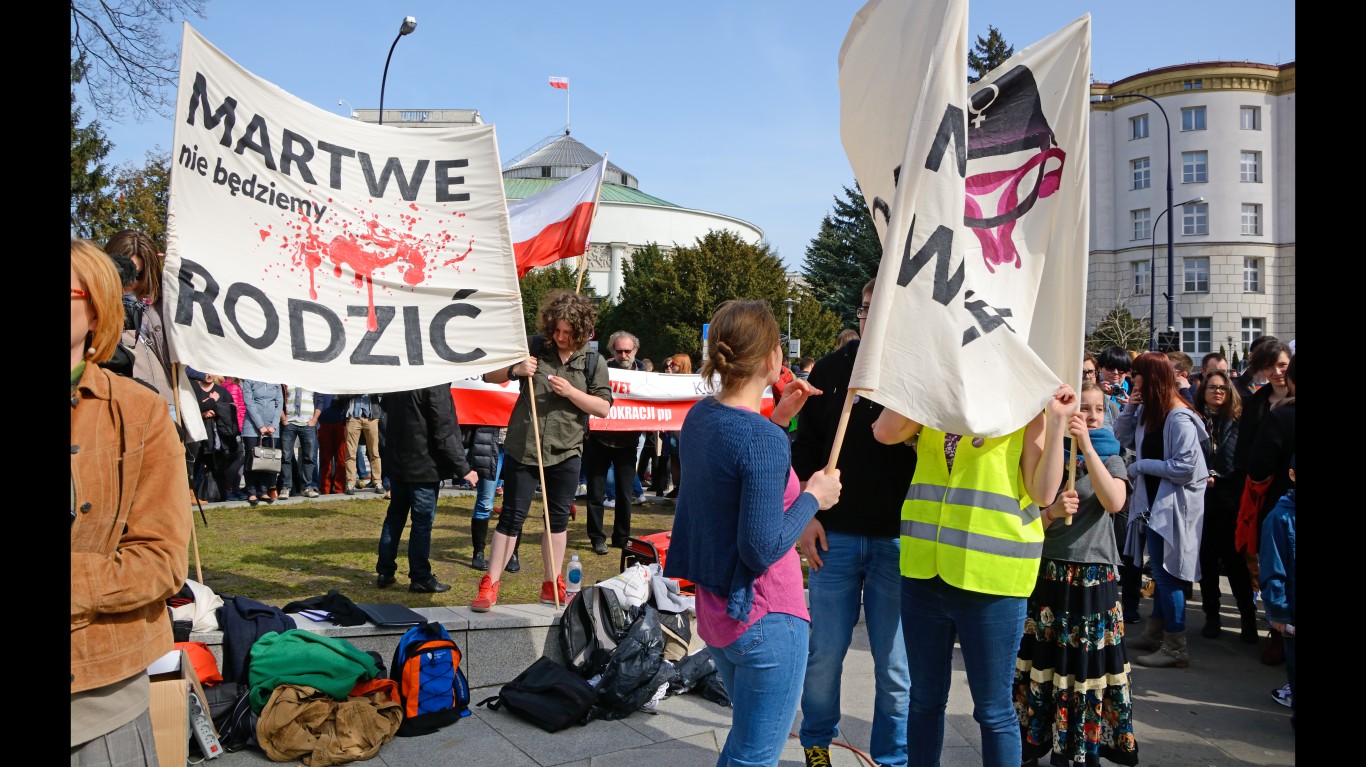
16. Abortion Ban Protest
> Year: 2016
> Location: Warsaw, Poland
> Demand: To reject proposed abortion ban
After the introduction of a bill in the Polish Parliament to ban all abortions and arrest not only people who have them, but also doctors who perform them, tens of thousands of women dressed in black and protested in Warsaw. Inspired by Iceland’s Women’s Day Off, many boycotted work and school to attend the protest. Parliament ended up rejecting the bill.
[in-text-ad]

17. Women’s March
> Year: 2017
> Location: Worldwide, with biggest march in Washington, D.C.
> Demand: To raise awareness that women’s rights are human rights
On the day after President Donald Trump’s inauguration, millions of women around the world, and hundreds of thousands in Washington D.C., gathered to protest the new administration’s threats to reproductive, civil, and human rights. The march ignited crucial public conversations around the oppression of women and other vulnerable populations of people and has helped other women’s rights movements such as #MeToo gain ground.
Thank you for reading! Have some feedback for us?
Contact the 24/7 Wall St. editorial team.
 24/7 Wall St.
24/7 Wall St.



